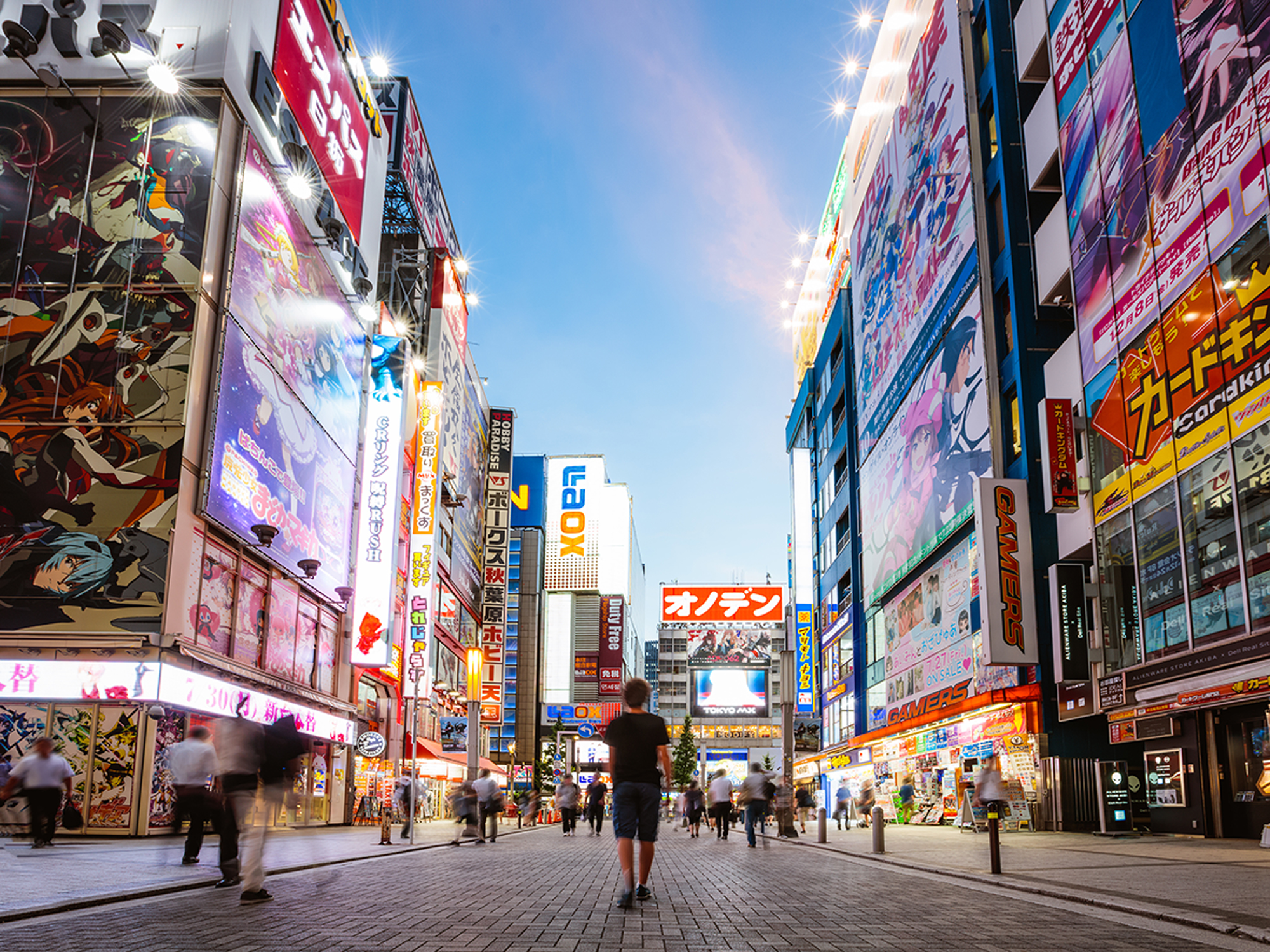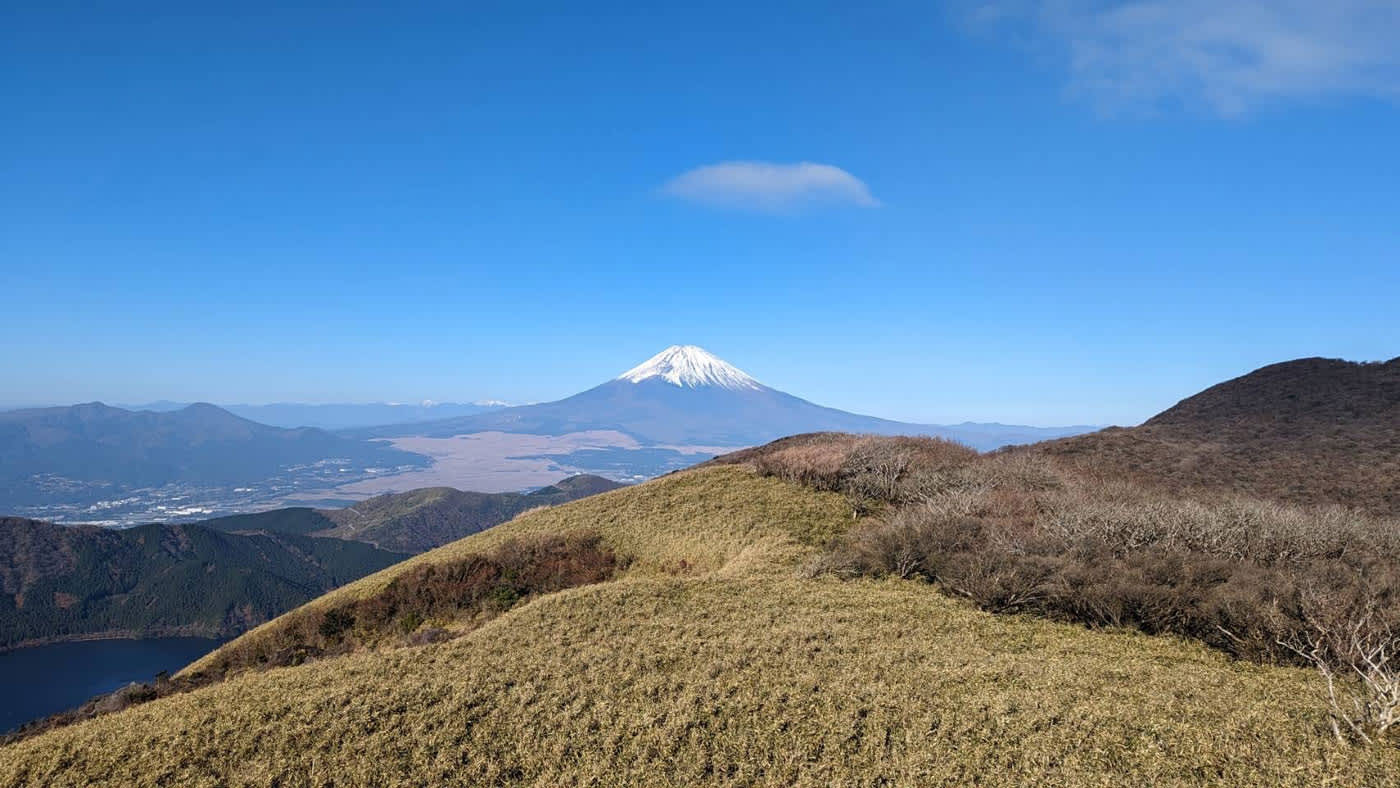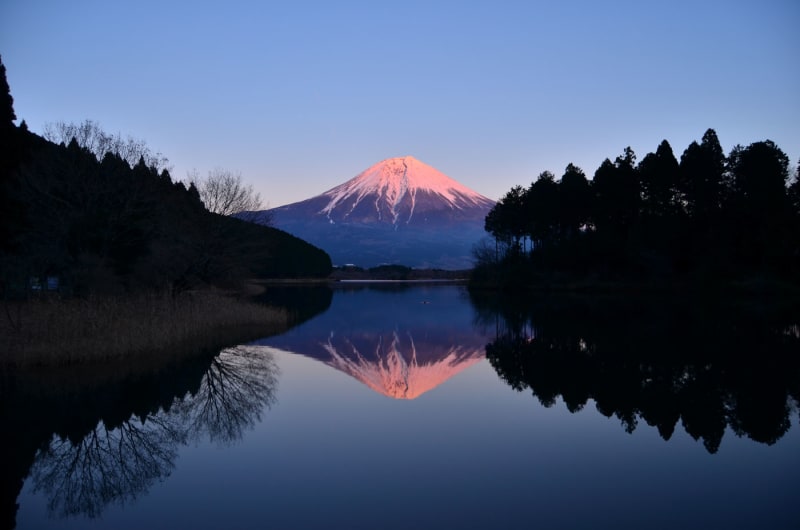
An upside-down Mt. Fuji reflected in Lake Tanuki at the western foot of Mt. Fuji (photo taken at Tanukiko Fugaku Terrace in December).
Photo Credit: Fuji-Hakone-Izu National Park Office
Mt. Fuji Travel Information - Climbing Mt. Fuji
Famed for its striking symmetrical beauty and imposing stature, Mt. Fuji is an iconic symbol of Japan and rising to 3,776 meters, is the country’s highest peak. During the official climbing season (July to early September), thousands of people who travel to Japan attempt the hike up to the summit, usually resting at a mountain hut on the way, in order to catch the sunrise from the top of the mountain. The peak’s popularity has resulted in severe congestion and over-crowding on some of the mountain trails however, plus other problems of over-tourism such as littering, problems with bad manners like setting up tents (there are no tent sites on Mt. Fuji), bonfires, and graffiti.Some hikers also arrive ill-prepared for the climb, or attempt to go up and down quickly throughout the night without taking adequate rest (known as ‘bullet climbing’), and so endangering themselves and running the risk of developing altitude sickness.
As a countermeasure to these issues, from 2024, a number of new rules restrictions and attempts will be in place to ensure the safety of climbers of Mt. Fuji, protecting both hikers and the mountain.
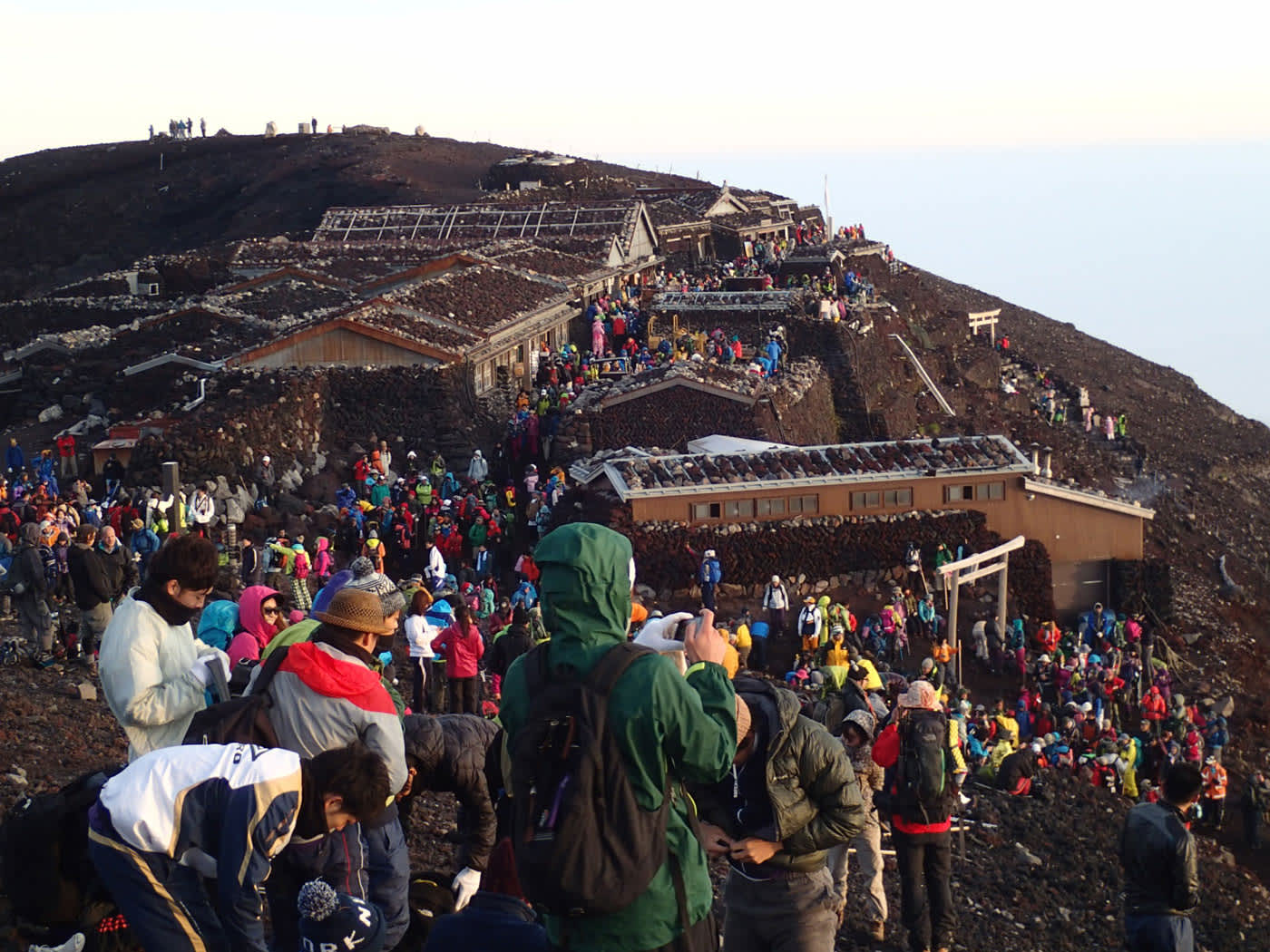
Crowds gather for sunrise at the summit of Mt. Fuji (Photo taken in August).
Photo Credit: Fuji-Hakone-Izu National Park Office
For climbers using the Yoshida Trail (one of the most popular of the four trails on Mt. Fuji), the gates at the fifth station starting point will be closed from 4 p.m. to 3 a.m. - this is to stop people from ‘bullet climbing’ during the night. There is also a limit of 4,000 climbers per day on the trail.
However, those with reservations for a stay at a mountain hut will be exempt from the time restrictions and climbing number limits. A hiking fee of 2,000 yen per person must now also be paid at the trailhead, in addition to the 1,000 yen donation which goes towards the conservation of the mountain. If you are climbing using the Shizuoka Prefecture mountain trails - Subashiri, Gotemba, Fujinomiya -, register on the web system in advance. Visit the Official Web Site for Mt. Fuji Climbing for further information and updates. (The web system URL will be released around June.)
The new rules are to restrict people from climbing without an overnight stay at a mountain lodge after dusk. This is because climbing in total darkness without adequate rest can increase the risk of exhaustion and/or accidents occurring. It is also important to recuperate inside and out of the elements, as resting outdoors without adequate equipment exposes you to the danger of hypothermia. To see the sunrise at the summit of Mt. Fuji, be sure to start climbing in the light of day, stay overnight at a lodge, and reach the summit before sunrise.
So, be sure to make a reservation at a mountain lodge, prepare the correct gear and equipment for the climb, and make a mountain climbing plan. Don’t forget that it is also possible to see the sunrise from many of the mountain lodges on the mountain. For safer climbing, it is perfectly conceivable to watch the sunrise at a mountain lodge before aiming for the summit.
Enjoy Other Spots Around Mt. Fuji - Without the Crowds
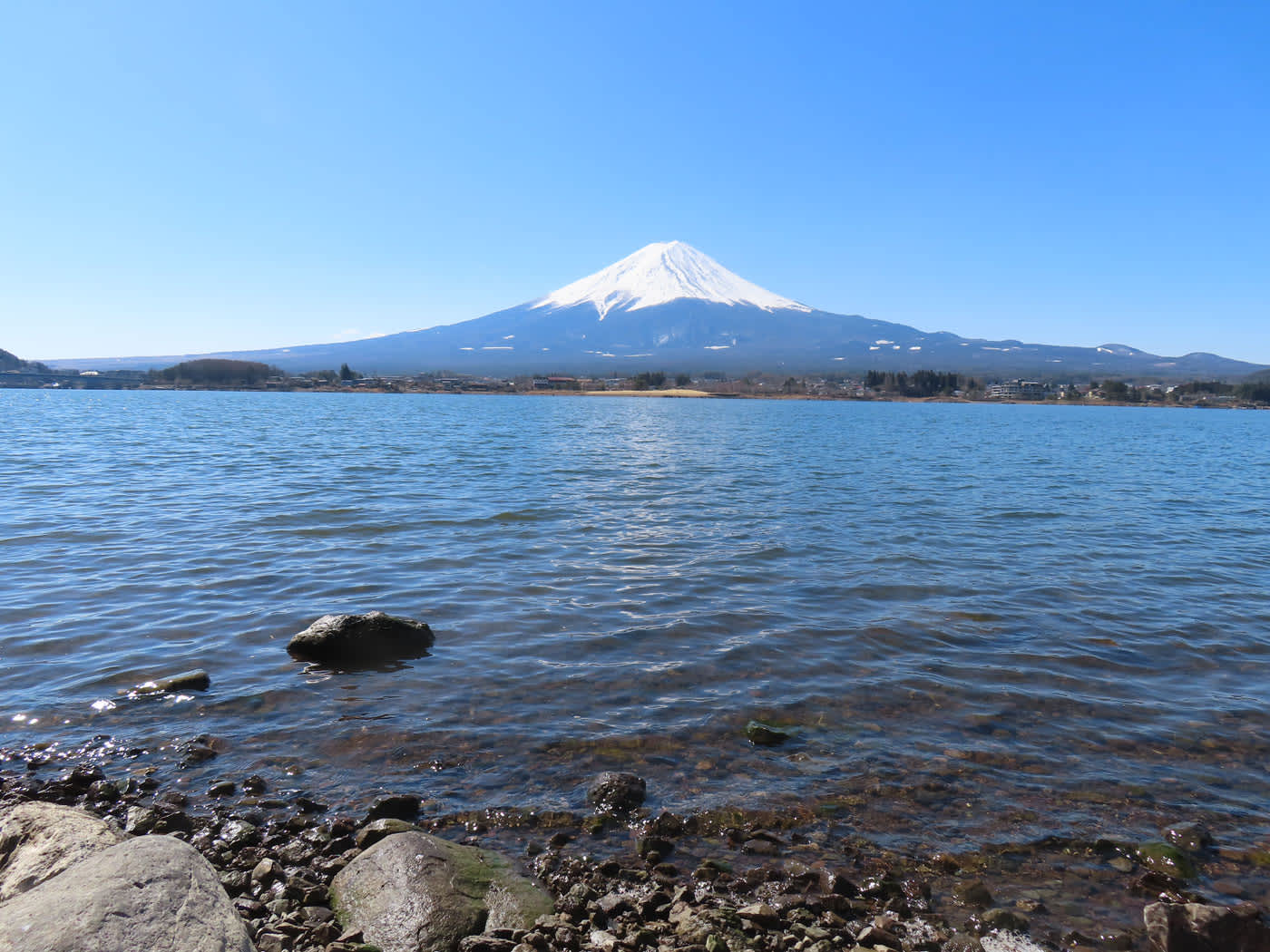
A view of snow-capped Mt. Fuji from Nagasaki Park on the shoreline of Lake Kawaguchiko (Photo taken in March).
Photo Credit: Fuji-Hakone-Izu National Park Office
Mt. Fuji is a large mountain and can be seen across a wide area, so there are plenty of places where you can avoid the crowds and get amazing views. Due to the number of visitors, it is anticipated that this year getting reservations for the mountain huts on Mt. Fuji is going to be difficult. If you don’t have sufficient experience in mountain climbing or the physical strength to make a day trip - starting early in the morning and coming back down by evening, why not enjoy amazing views by "seeing" Mt. Fuji at spots surrounding the mountain, instead of "climbing" it? At the foot of Mt. Fuji on the Yamanashi Prefecture (north) side, there are a number of remarkable viewpoints including Nagasaki Park and Oishi Park on the shoreline of Lake Kawaguchi, while up in the mountains there are mesmerising views from the Shindo Pass.
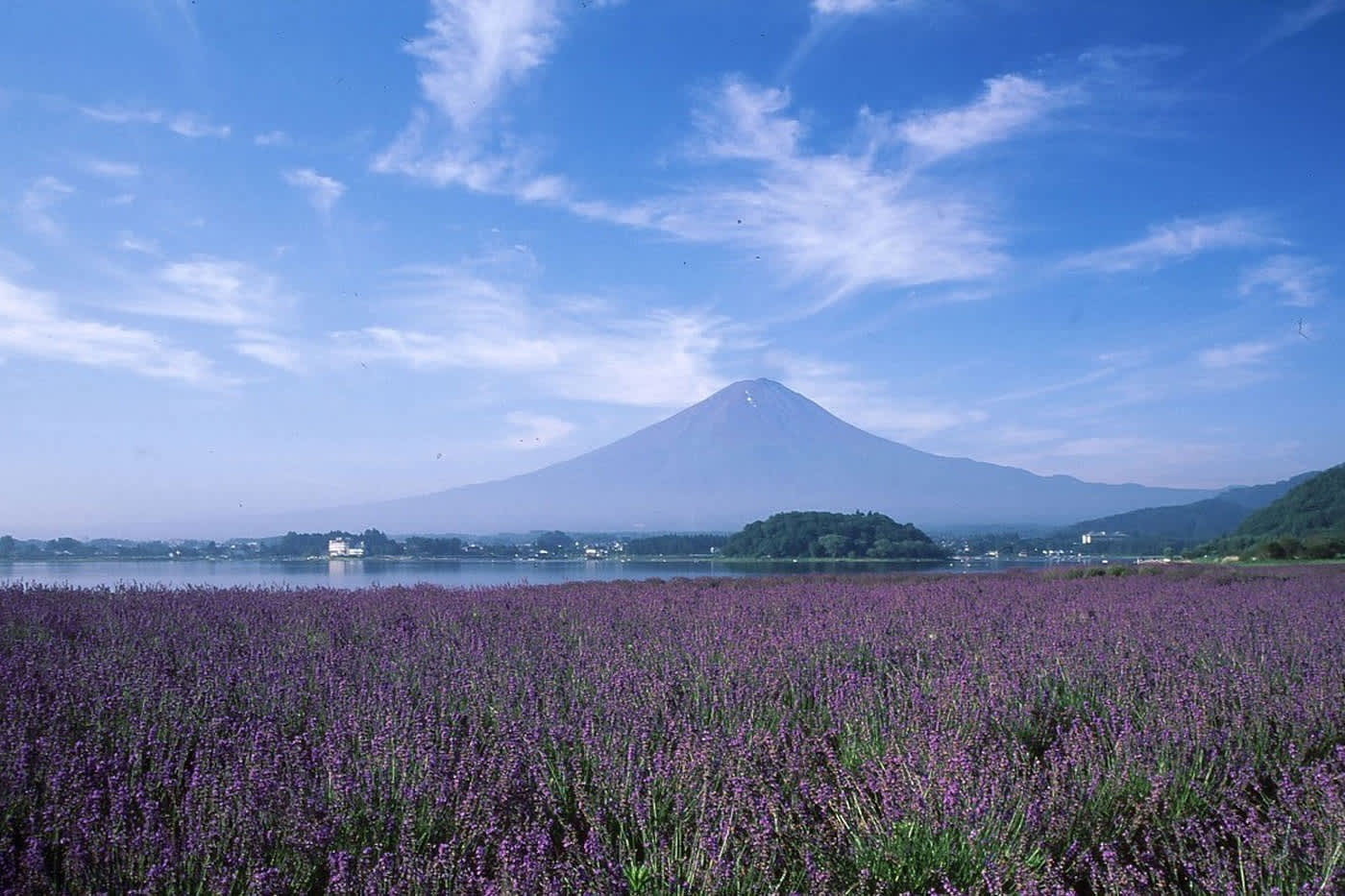
Sweeping views of Mt. Fuji from the lakeside Oishi Park with lavender (Photo taken in July).
Photo Credit: Fuji-Hakone-Izu National Park Office
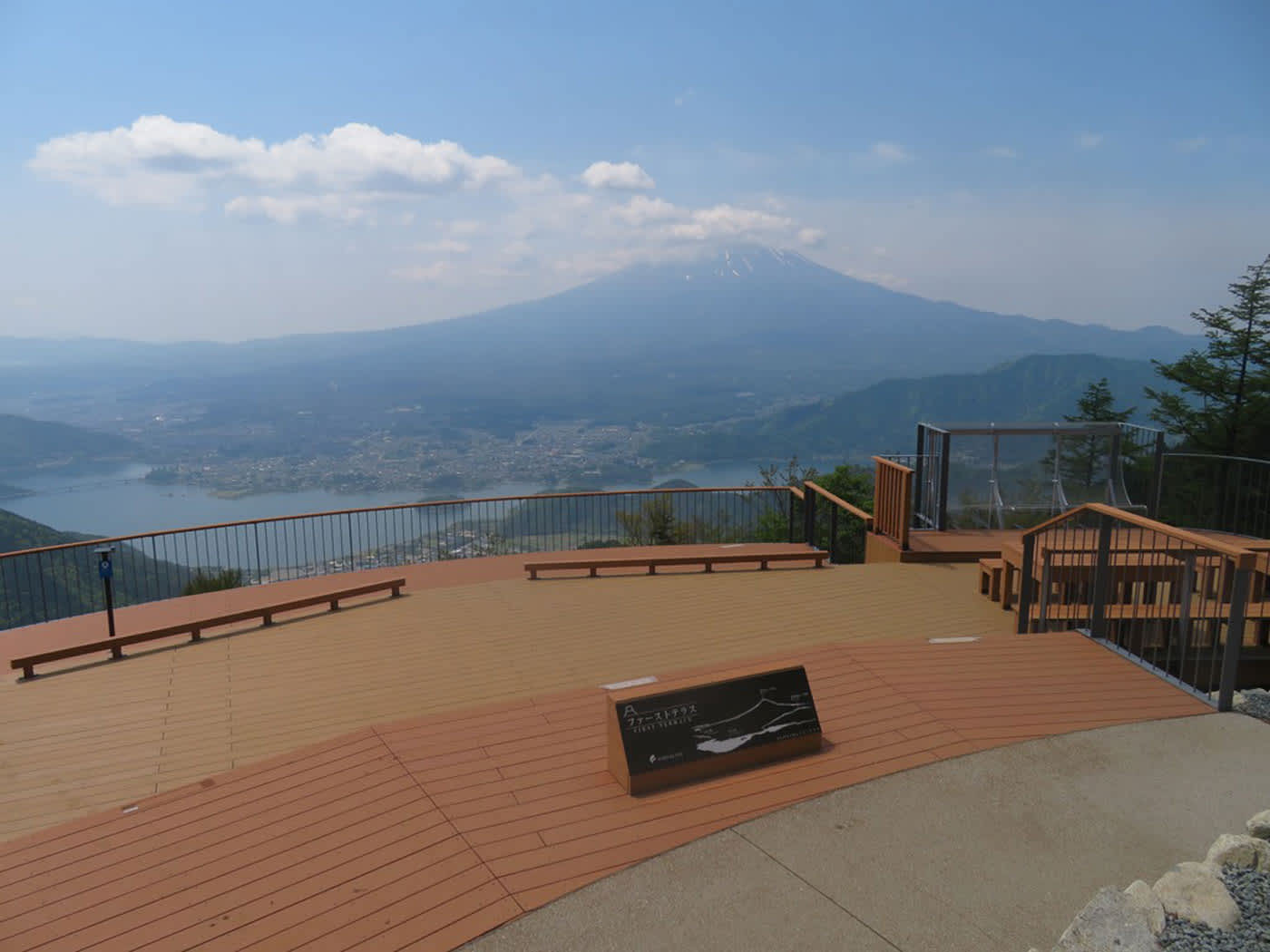
Enjoying Mt. Fuji views from FUJIYAMA Twin Terrace(1st Terrace) located on the Shindo Pass.
Photo Credit: Fuji-Hakone-Izu National Park Office
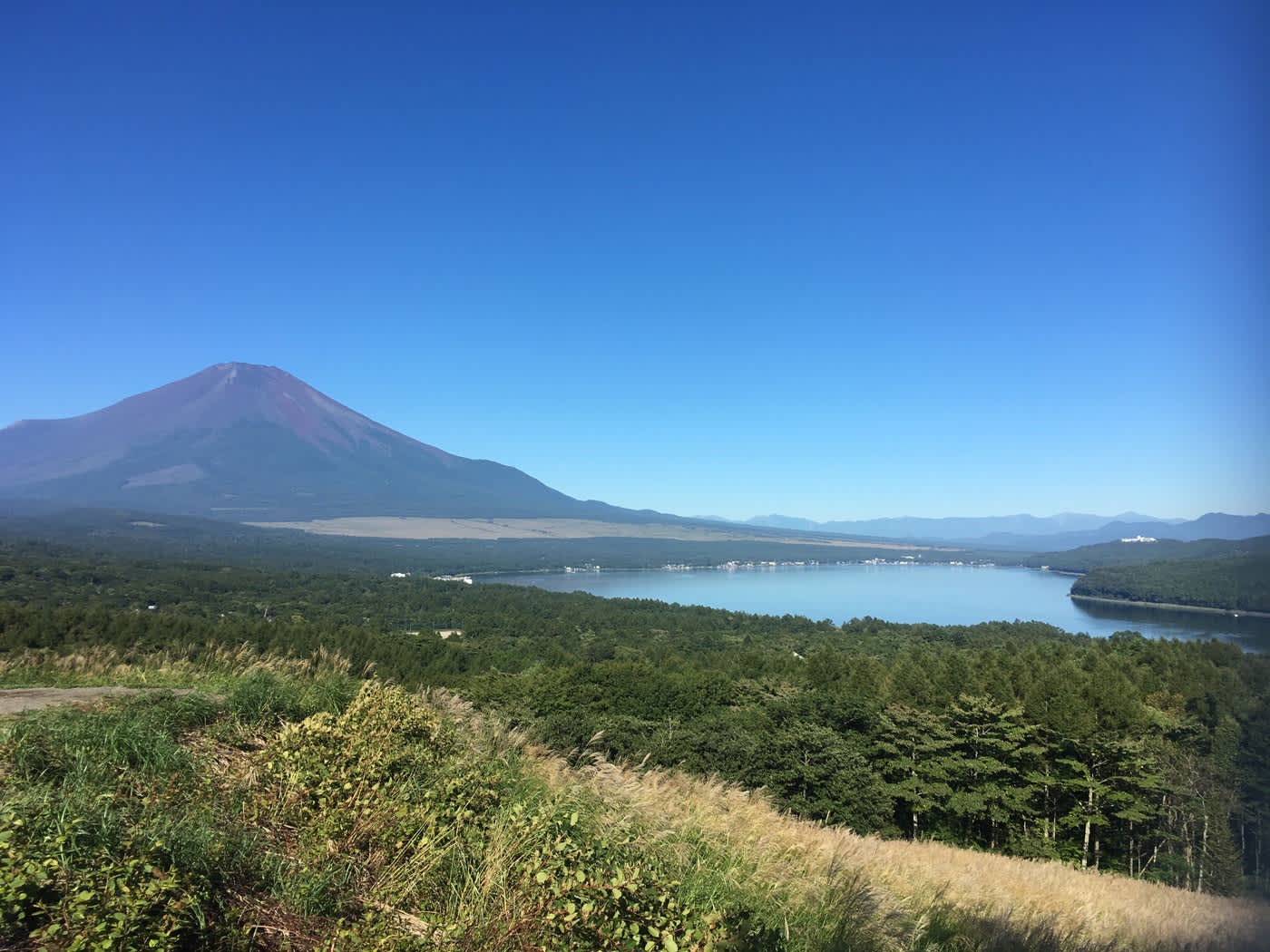
One of the many fantastic viewpoints, Yamanakako Panorama-dai View Point, on the Yamanashi side of Mt. Fuji.
Photo Credit: Fuji-Hakone-Izu National Park Office
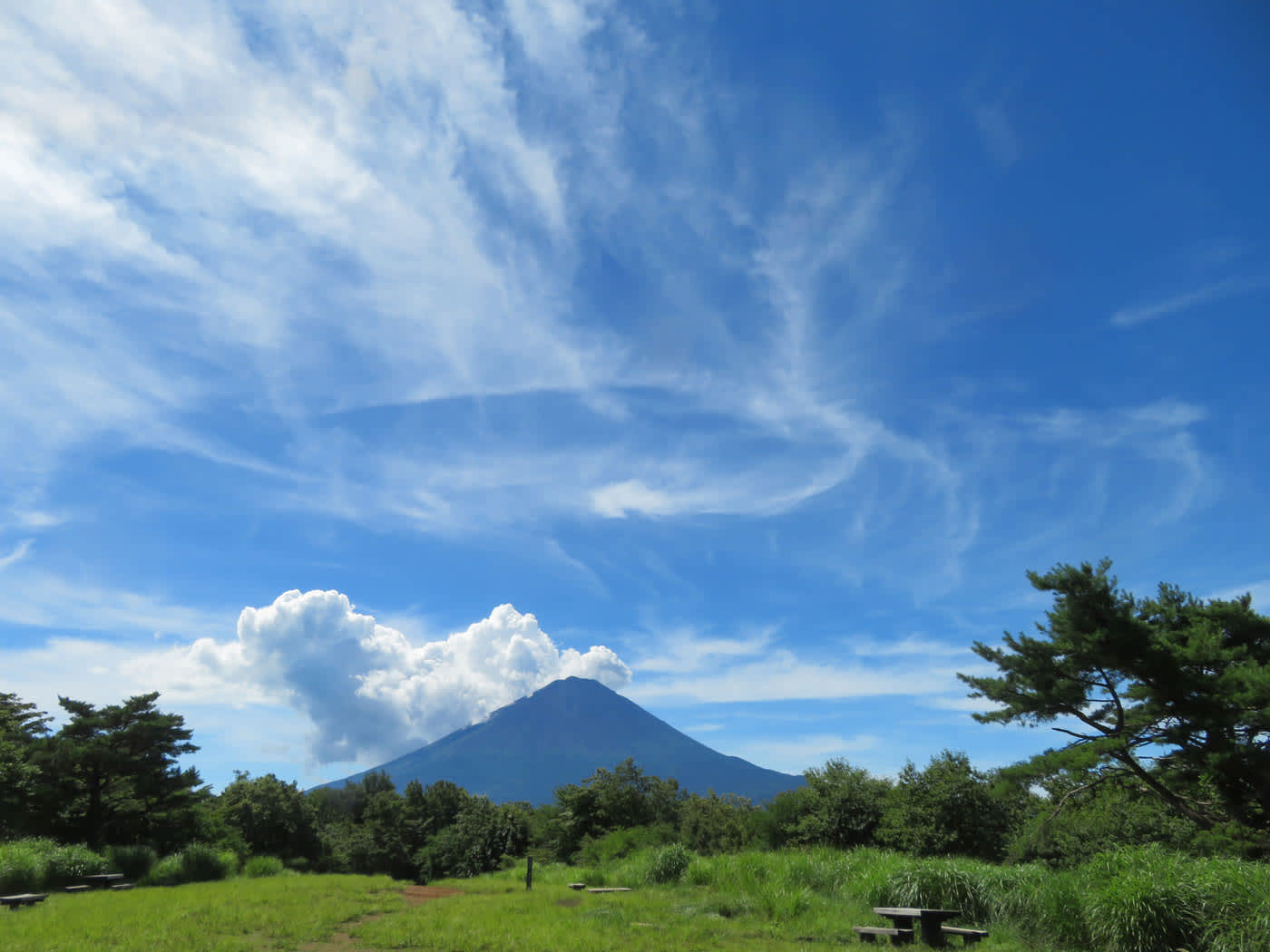
Mt. Fuji towers in the distance from Sanko-dai (on the Yamanashi side).
Photo Credit: Fuji-Hakone-Izu National Park Office
On the Shizuoka Prefecture (western) side of the mountain, head to Lake Tanuki for beautiful views surrounded by nature, or to the south is Koshikiri-zuka, a high-altitude observation deck for sweeping views of Mt. Fuji. To the east in Hakone, Kanagawa Prefecture you can enjoy majestic views from the top of Mt. Komagatake, a small neighbouring summit which can be reached via ropeway.
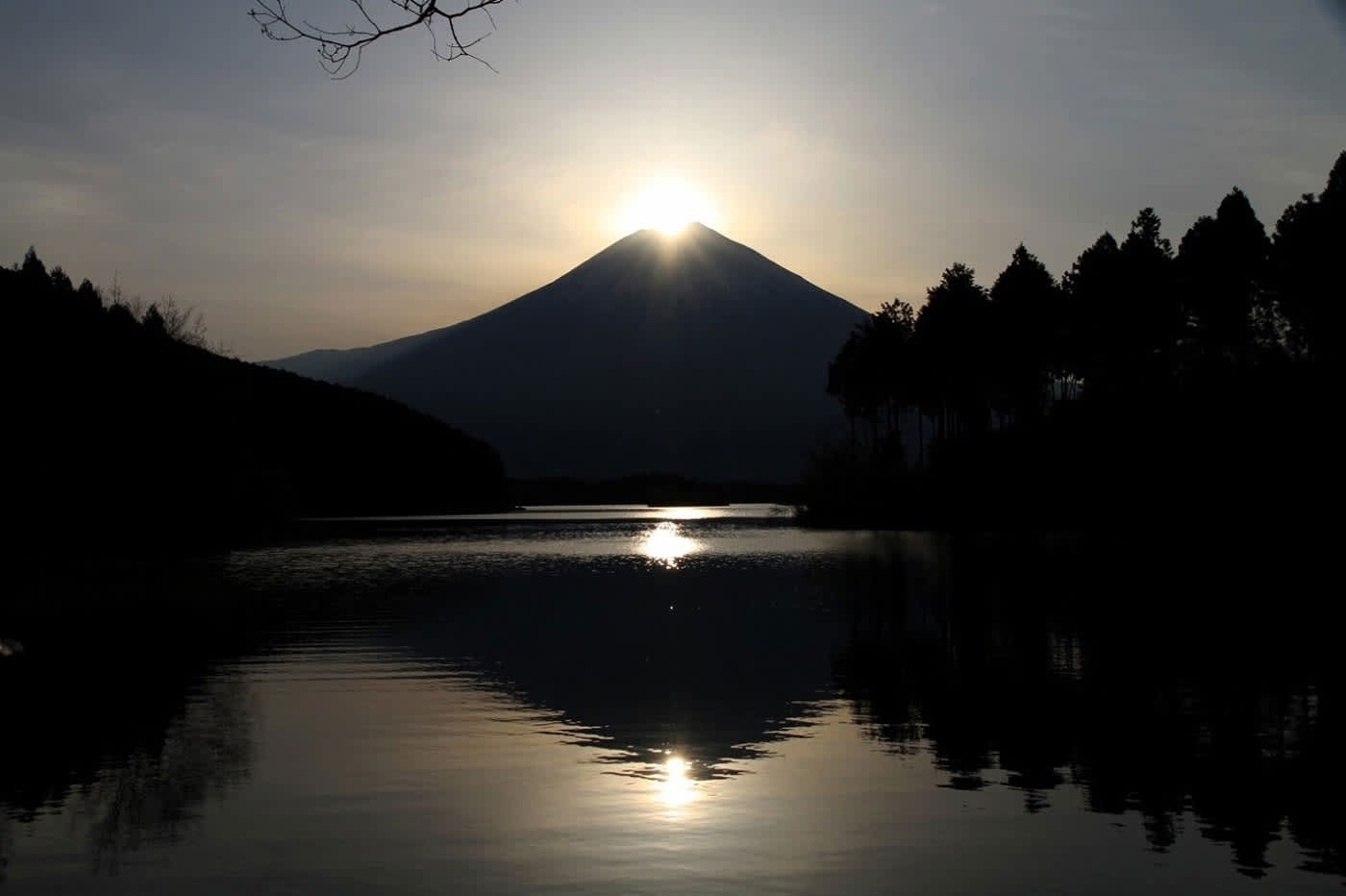
Captivating views from Tanukiko Fugaku Terrace, Lake Tanuki at the foot of Mt. Fuji (Shizuoka side).
Photo Credit: Fuji-Hakone-Izu National Park Office
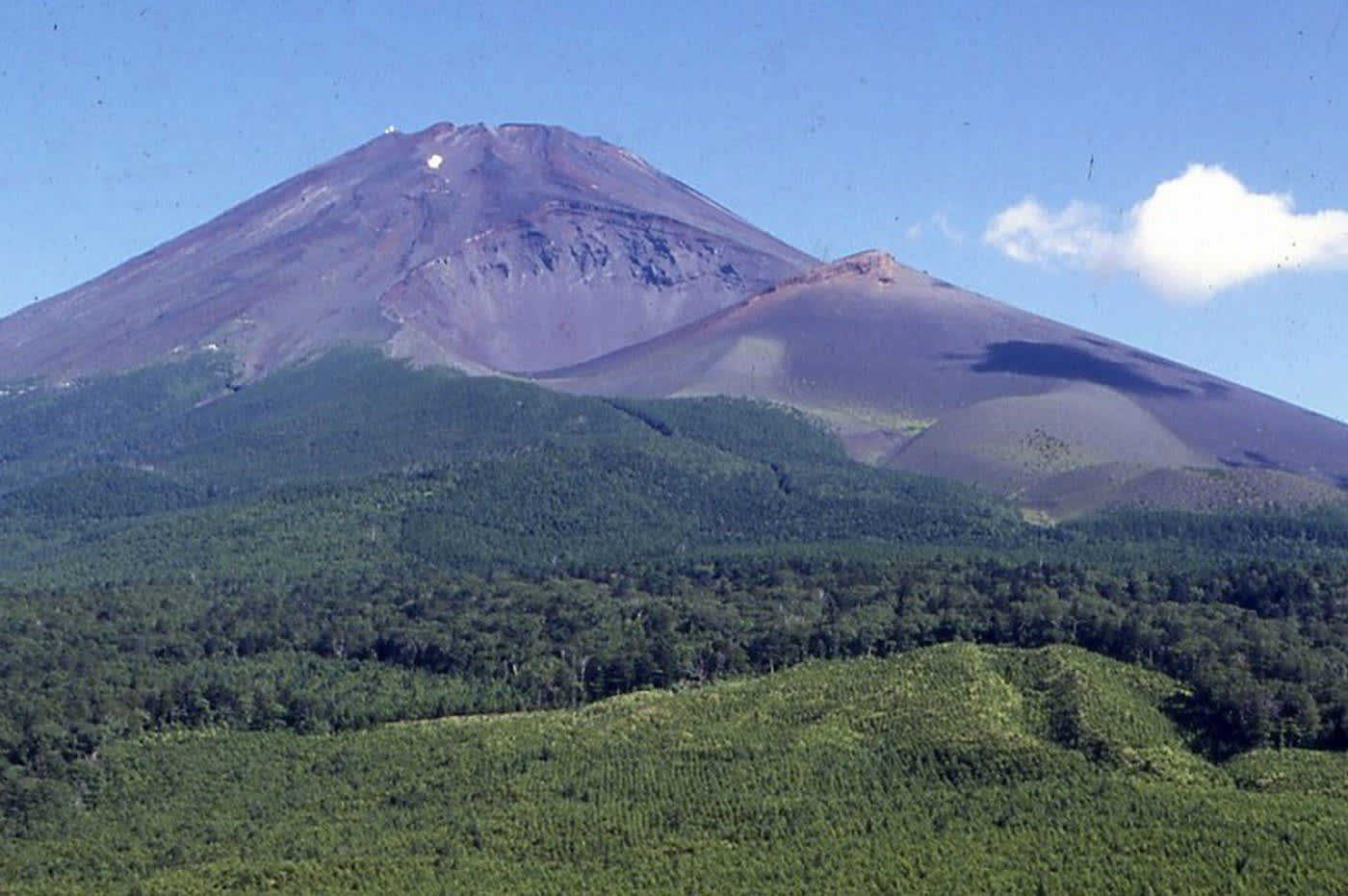
Mt. Fuji rises majestically at Koshikiri-zuka (outside the national park) in Shizuoka Prefecture.
Photo Credit: Fuji-Hakone-Izu National Park Office
Mt. Fuji as seen from Mt. Komagatake in Hakone.
Photo Credit: Fuji-Hakone-Izu National Park Office
Lastly, on the northwest side of the beautiful Izu Peninsula in Shizuoka Prefecture is the Darumayama Plateau, which boasts distant but wonderfully scenic views with few crowds.
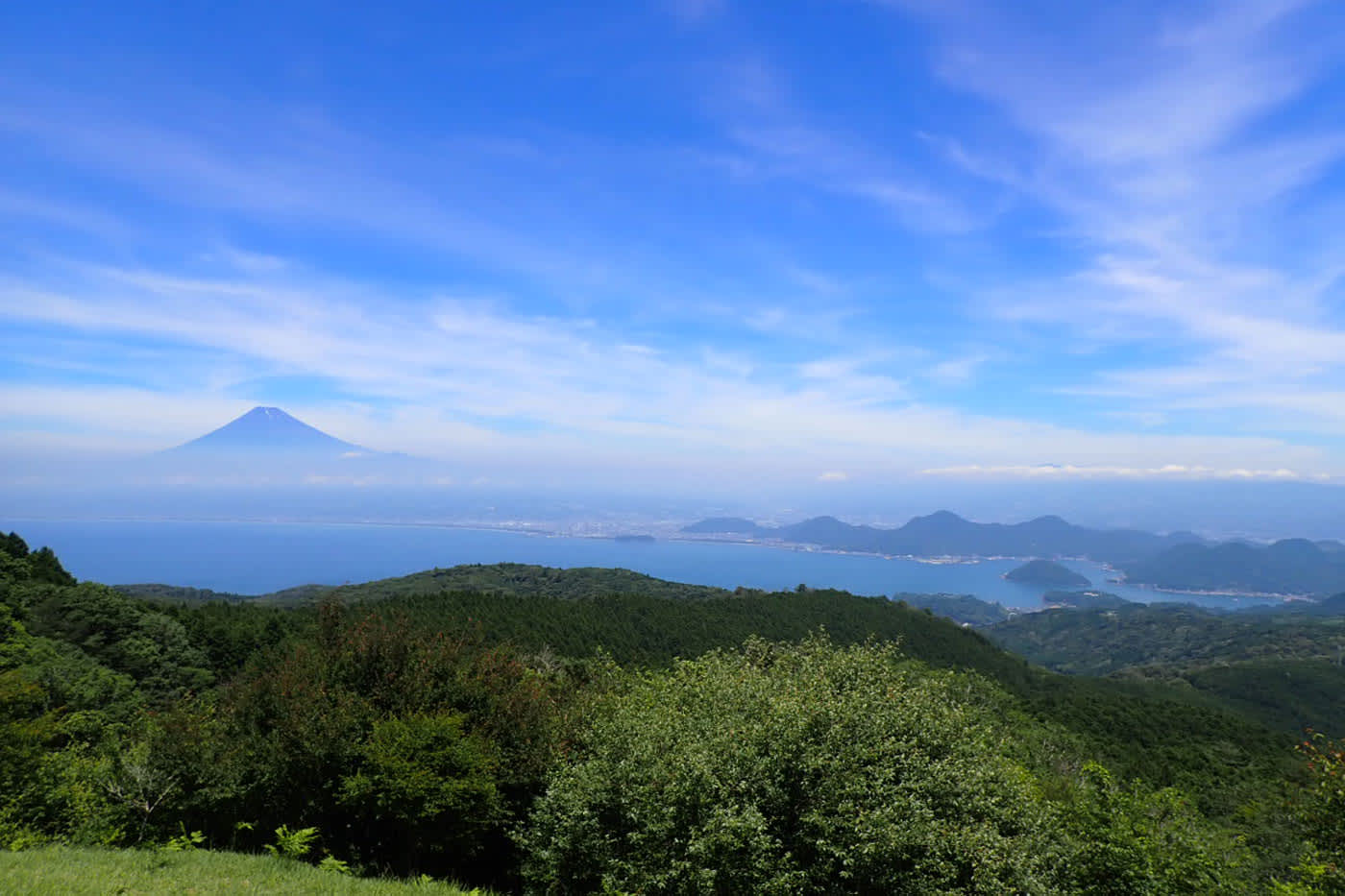
Sweeping views of Mt. Fuji and the bay from the Darumayama Plateau.
Photo Credit: Fuji-Hakone-Izu National Park Office
Avoiding Troubles at Busy Spots
Arakura Fuji Sengen-jinja Shrine and the famed Chureito Pagoda is one of the most popular and iconic Mt. Fuji viewpoints, but for visitors coming by car there are often issues with parking and navigating the narrow roads up to the shrine. Instead, go there by public transport - it has good access by train and bus - for a more relaxed experience.
The Mt. Fuji Panoramic Ropeway is another popular spot, but there can be long lines at the ropeway station. So those with a bit of energy can avoid the tourist crowds and stretch their legs by hiking up (or down) the mountain instead. The Mt. Tenjo hiking course is a scenic trail which starts at Gokoku Shrine and gently winds up the mountainside. It passes the Nakabadaira viewpoint, a beautiful hydrangea blooming spot (which also offers views of Mt. Fuji and Lake Kawaguchiko), before reaching the summit area of Mt. Tenjo, from where you can enjoy more fantastic views - the top ropeway station is just a short walk away.
Visiting Responsibly
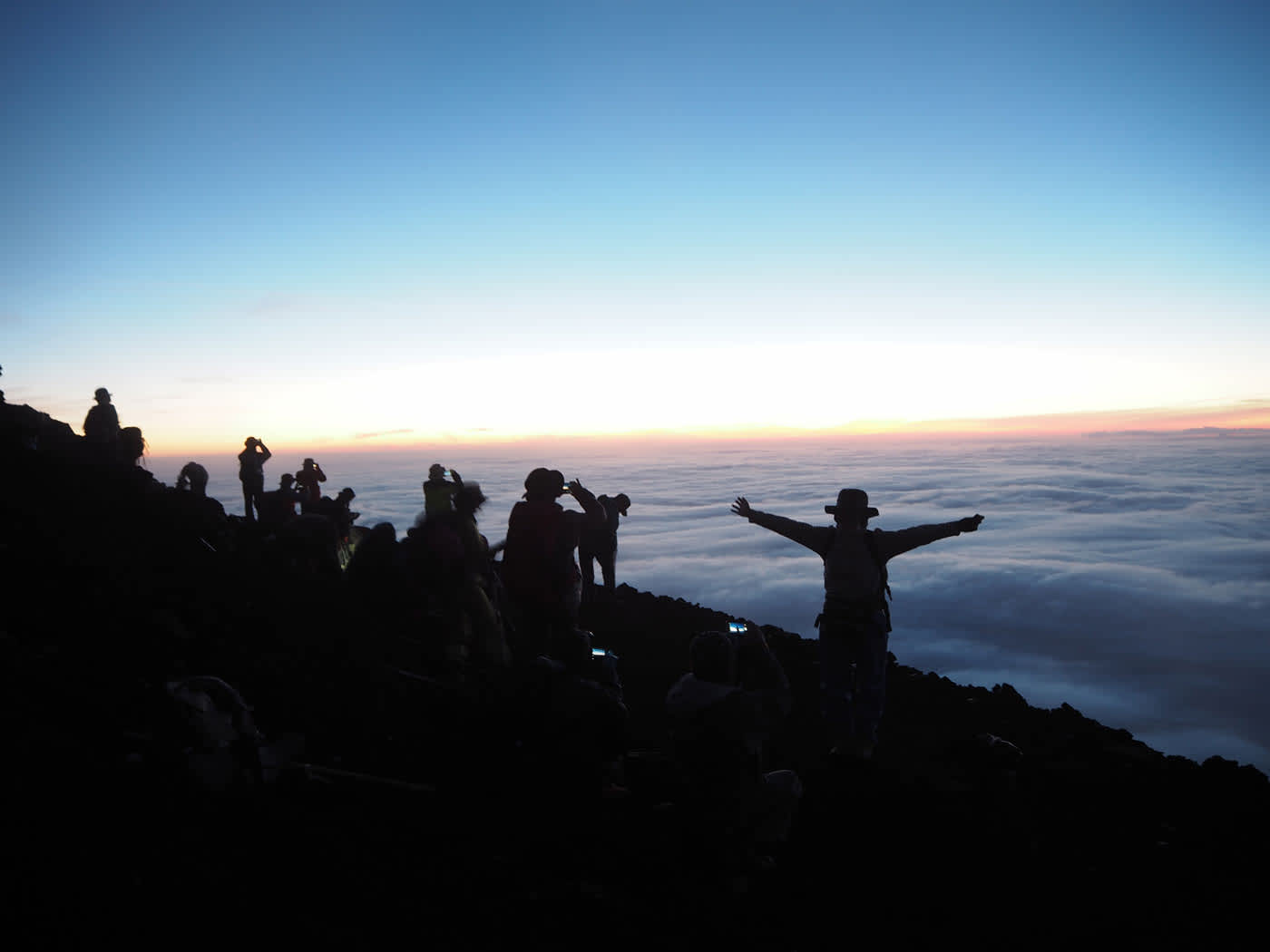
Worth all the effort - climbers catch the sunrise from the summit of Mt. Fuji.
Over-tourism problems in areas around Mt. Fuji have been much-publicised in the media recently - most notable of these is a convenience store near Kawaguchiko Station, which has become an extremely popular photo spot, with many tourists congregating in the car park, ignoring signs and endangering themselves and others by causing havoc on the street. Now as a desperate measure, the local government has resorted to installing a fence to block the view of Mt. Fuji. There have also been instances of tourists trespassing on private property around the lakeside of Kawaguchiko.
So to ensure that everyone can continue to enjoy the wonders of Mt. Fuji, remember to travel responsibly, pay attention to signs, and do your best to avoid adding to the problems of over-crowding and over-tourism - Mt. Fuji is big enough for everyone to enjoy!
-
About the author
Author: Tom Fay
Profile: Tom Fay is a British travel and outdoors writer who has been living in Japan since 2007 and is now based in rural Kyoto. He is the author of numerous guidebooks to Japan and has written articles on Japan’s outdoors for various publications.

















































